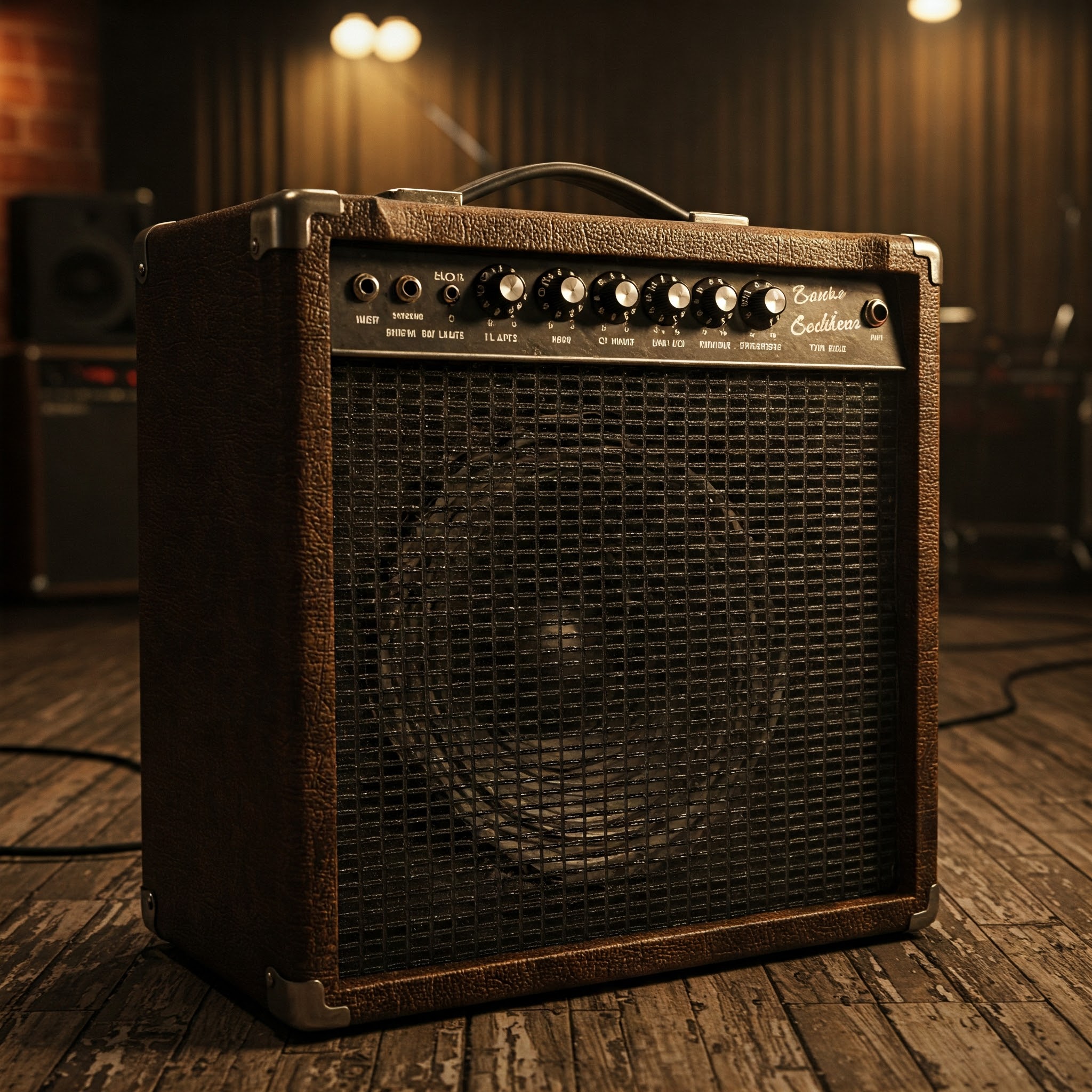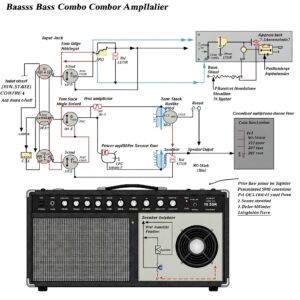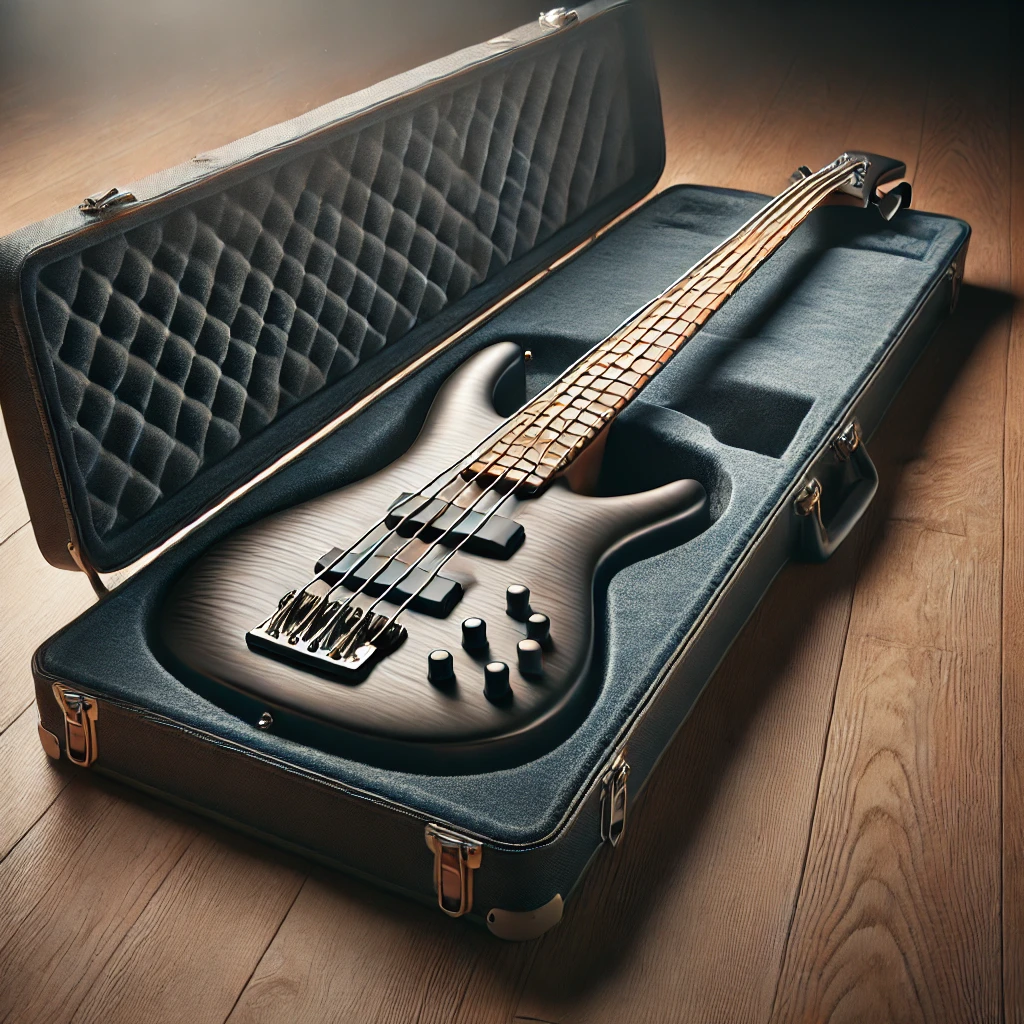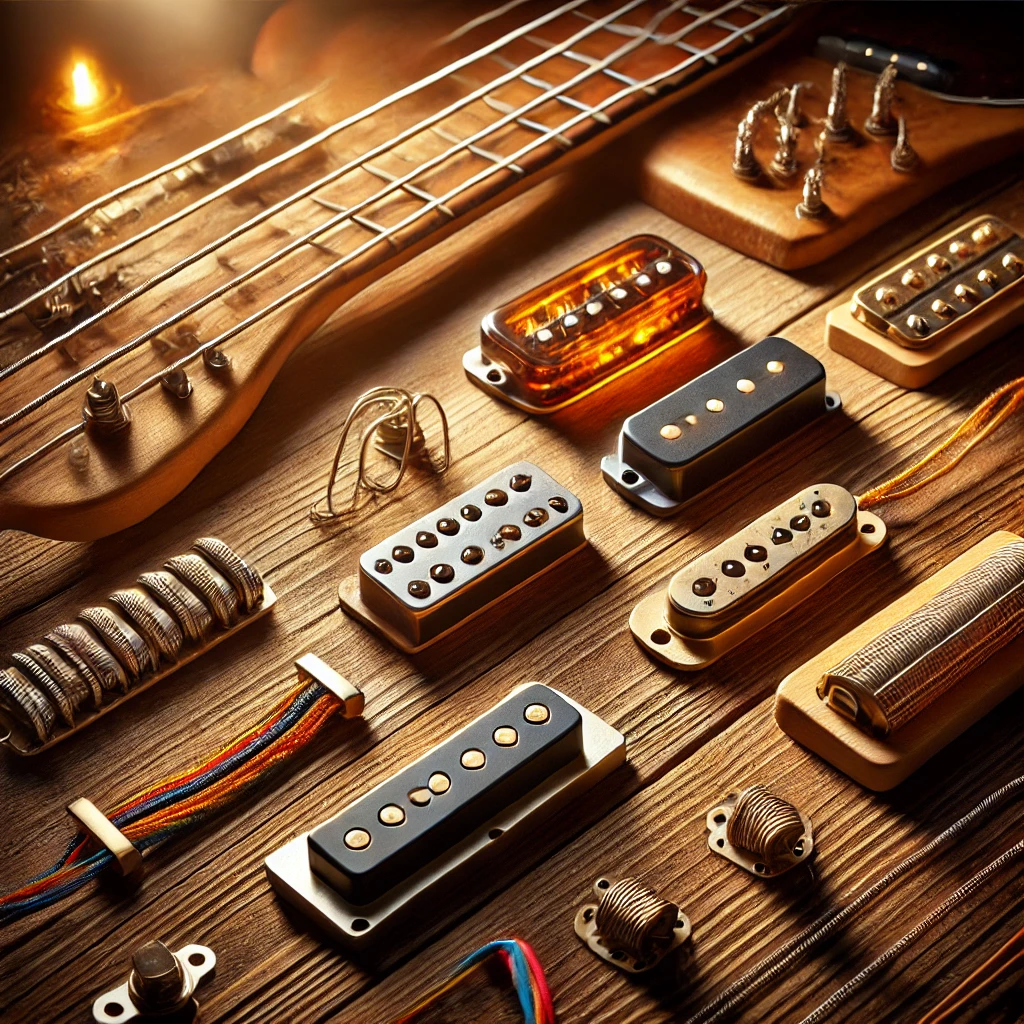Finding Your Perfect Bass Companion
Are you on the hunt for that perfect bass combo amp to elevate your sound? You’re not alone. I’ve spent countless hours testing, comparing, and analyzing various models to bring you this comprehensive guide. The right bass combo amp can be the difference between a mediocre performance and one that leaves your audience in awe. ⚡
Whether you’re a beginner bass player looking for your first amp or a seasoned pro seeking an upgrade, this guide will walk you through everything you need to know about bass combo amps. From understanding wattage requirements to decoding speaker configurations, I’ve got you covered.
What Exactly Is a Bass Combo Amp? 🎸
A bass combo amp is an all-in-one solution that combines an amplifier and speaker(s) in a single unit. Unlike separate amp heads and cabinets, a bass combo amp offers convenience, portability, and simplicity – perfect for musicians who need to move their gear frequently or have limited space.
These versatile units come in various sizes, power ratings, and with different features. Consequently, there’s a bass combo amp out there for every style, budget, and playing situation.
Why Choose a Bass Combo Amp? ✅
Before diving into specific models, let’s explore some compelling reasons why a bass combo amp might be the right choice for you:
- Portability: Bass combo amps are generally more compact and easier to transport than separate amp heads and cabinets.
- Cost-effectiveness: Typically, you’ll get more bang for your buck with a combo amp compared to purchasing components separately.
- Simplicity: With everything in one unit, setup and teardown are quick and straightforward.
- Space efficiency: For those with limited practice or performance space, a combo amp takes up less room.
- Consistency: You’ll always have the same sound since the components are fixed together.
However, there are some tradeoffs to consider. For instance, if one component fails, you might need to repair or replace the entire unit. Additionally, some high-end separate components might offer superior sound quality for professional applications.
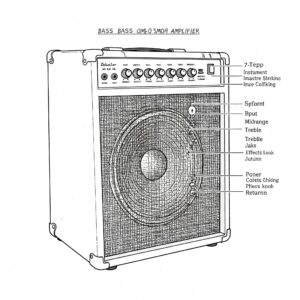
Key Factors to Consider When Buying a Bass Combo Amp 🔍
Power Requirements
The wattage you need depends primarily on where you’ll be playing:
- Home practice: 20-40 watts is typically sufficient
- Small venues/rehearsals: 100-200 watts recommended
- Medium venues: 200-500 watts
- Large venues: 500+ watts (though at this point, you might want to consider going through the PA system)
Remember, bass frequencies require more power to produce than higher frequencies. Therefore, a bass amp generally needs more wattage than a comparable guitar amp.
Speaker Size and Configuration
The size and number of speakers in your bass combo amp significantly impact your sound:
- 8-inch speakers: Provide tight, focused sound but may lack low-end depth
- 10-inch speakers: Offer a good balance of punch and low-end
- 12-inch speakers: Deliver deeper bass response
- 15-inch speakers: Provide the most low-end but may sacrifice some definition
Many bass combo amps feature a combination of speaker sizes (for example, a 15-inch speaker paired with a horn tweeter) to deliver a full-range sound.
Tone Shaping Options
Look for EQ controls that let you shape your sound precisely:
- Basic EQ (Bass, Middle, Treble): Provides essential tone shaping
- Parametric EQ: Offers more precise control over specific frequency ranges
- Graphic EQ: Gives visual representation and control over multiple frequency bands
Additional features like built-in compression, overdrive, or effects can expand your sonic palette.
Durability and Construction
Since you’ll likely be moving your amp around, durability matters:
- Corner protectors: Help prevent damage during transport
- Quality handle(s): Make carrying easier
- Sturdy grill cloth: Protects the speakers
- Solid construction: Minimizes unwanted vibrations and maximizes longevity
Top 10 Bass Combo Amps for Every Player and Budget 🏆
For Beginners and Practice
1. Fender Rumble 40 V3 Bass Combo Amp
This lightweight 40-watt combo with a 10-inch speaker is perfect for beginners and practice sessions. It offers surprising volume and tone for its size and price point, with simple but effective controls.
Key Features:
- 40 watts
- 10-inch speaker
- Weighs only 18 pounds
- Overdrive circuit
- Contour switch for preset EQ
- Headphone output and aux input
2. Ampeg BA-108v2 20-Watt Bass Combo Amp
A compact 20-watt amp with an 8-inch speaker that’s ideal for bedroom practice. Despite its small size, it delivers the classic Ampeg tone that has been featured on countless recordings.
Key Features:
- 20 watts
- 8-inch speaker
- Aux input and headphone output
- 3-band EQ
- Legendary Ampeg tone
For Intermediate Players and Small Gigs
3. Fender Rumble 100 Bass Combo Amp
A step up from the Rumble 40, this 100-watt combo can handle rehearsals and small gigs while remaining surprisingly lightweight.
Key Features:
- 100 watts
- 12-inch speaker
- Weighs only 22 pounds
- 4-band EQ
- XLR line out for direct recording or PA connection
- Overdrive circuit
4. Orange Crush Bass 50 Combo Amp
With its distinctive orange tolex and iconic pictogram controls, this 50-watt combo stands out visually and sonically with its warm, punchy tone.
Key Features:
- 50 watts
- 12-inch speaker
- Parametric mid control
- Built-in chromatic tuner
- Blend-able overdrive circuit
5. Hartke HD150 Bass Combo Amp
Known for its aluminum-cone speaker technology, this 150-watt combo delivers crisp, articulate tone with excellent definition.
Key Features:
- 150 watts
- 15-inch HyDrive hybrid cone speaker
- 3-band EQ with 7-band graphic EQ
- Shape control for quick tone adjustment
- XLR direct output with ground lift
For Advanced Players and Professional Use

6. Markbass CMD 102P Bass Combo Amp
This Italian-made 500-watt powerhouse features two 10-inch speakers and weighs only 53 pounds, making it one of the most portable high-powered combo amps available.
Key Features:
- 500 watts
- Two 10-inch speakers
- 4-band EQ with “VLE” and “VPF” filters
- XLR direct out with pre/post EQ switch
- Line in for backing tracks
7. Gallien-Krueger MB212-II Bass Combo Amp
A professional-grade 500-watt combo with two 12-inch speakers, offering pristine clean tone and excellent portability for its power.
Key Features:
- 500 watts
- Two 12-inch speakers
- 4-band active EQ with contour switch
- Horn tweeter with level control
- Direct out with pre/post EQ switch and ground lift
8. Ampeg BA-210v2 Bass Combo Amp
A 450-watt combo that delivers the classic Ampeg sound in a portable package with two 10-inch speakers.
Key Features:
- 450 watts
- Two 10-inch speakers
- 3-band EQ with ultra-high and ultra-low switches
- Scrambler overdrive circuit
- XLR direct output
For Specialized Applications
9. Phil Jones Bass Double Four BG-75 Bass Combo Amp
This ultra-compact 70-watt combo with two 4-inch speakers is perfect for upright bass players and those needing maximum portability without sacrificing tone.
Key Features:
- 70 watts
- Two 4-inch proprietary speakers
- Weighs only 13.5 pounds
- Surprisingly full sound despite small size
- Headphone out and aux in
10. Acoustic B100C Bass Combo Amp
An affordable 100-watt combo with a 15-inch speaker that’s ideal for those wanting deep bass response on a budget.
Key Features:
- 100 watts
- 15-inch speaker
- 5-band EQ
- Tilt-back cabinet design
- XLR direct out
Comparison Table: Finding Your Perfect Match 📊
| Model | Watts | Speaker(s) | Weight | Best For | Price Range |
|---|---|---|---|---|---|
| Fender Rumble 40 V3 | 40W | 10″ | 18 lbs | Beginners, Practice | $$ |
| Ampeg BA-108v2 | 20W | 8″ | 24 lbs | Home Practice | $ |
| Fender Rumble 100 | 100W | 12″ | 22 lbs | Small Gigs | $$ |
| Orange Crush Bass 50 | 50W | 12″ | 35 lbs | Rock/Alternative | $$ |
| Hartke HD150 | 150W | 15″ | 49 lbs | All-Around Use | $$$ |
| Markbass CMD 102P | 500W | 2×10″ | 53 lbs | Professional Use | $$$$ |
| Gallien-Krueger MB212-II | 500W | 2×12″ | 66 lbs | Pro/Studio Work | $$$$ |
| Ampeg BA-210v2 | 450W | 2×10″ | 57 lbs | Rock/Metal | $$$ |
| Phil Jones Double Four | 70W | 2×4″ | 13.5 lbs | Upright Bass | $$$ |
| Acoustic B100C | 100W | 15″ | 46 lbs | Budget Deep Bass | $$ |
🔥 Amplify Your Bass Experience Today! 🔥
Ready to transform your bass sound? The perfect amp is just a click away! Check out these top-rated bass combo amps on Amazon today and take advantage of special pricing and fast shipping. Your future audience will thank you!
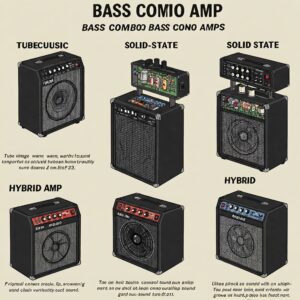
Bass Combo Amp Features Explained: What Really Matters 🧠
Understanding Wattage and Volume
Many bassists mistakenly believe that more watts always equals more volume. While wattage is important, the efficiency of the speaker(s) also plays a crucial role. For instance, a 300-watt amp with efficient speakers might sound louder than a 500-watt amp with less efficient speakers.
Moreover, perceived loudness depends on frequency response and how well the amp cuts through the mix. An amp with strong midrange presence might seem louder in a band context than one with the same wattage but a scooped EQ profile.
Active vs. Passive Bass Considerations
Your choice of bass guitar impacts what you need in an amp:
- Passive basses (traditional design with no onboard preamp) generally benefit from amps with more preamp gain and EQ flexibility.
- Active basses (with onboard preamp and EQ) may require less from the amp’s preamp section but might benefit from amps with cleaner power amps to avoid distortion.
Some amps feature different input options optimized for active or passive instruments.
Solid State vs. Tube vs. Hybrid
Most bass combo amps use solid-state technology, but there are other options:
- Solid State: Generally lighter, more reliable, and consistent
- Tube: Adds warmth and natural compression but requires more maintenance
- Hybrid: Combines tube preamp with solid-state power amp for a blend of warmth and reliability
For most bassists, solid-state amps provide the clean, punchy sound that works well for bass, but some genres (like rock and blues) might benefit from the warmth of tubes.
How to Get the Most from Your Bass Combo Amp 💪
Placement Matters
Where you position your bass combo amp can dramatically affect its sound:
- Elevate it: Getting the amp off the floor reduces bass absorption and helps project your sound
- Corner placement: Enhances bass response but may create uneven sound
- Away from walls: Creates a cleaner, more defined sound
- Angled toward your ears: Helps you hear yourself better, especially useful during rehearsals
EQ Tips for Different Styles
Different musical genres often call for different EQ approaches:
- Rock/Metal: Slight mid scoop with boosted lows and highs for punch and definition
- Jazz: Relatively flat EQ with perhaps a slight mid boost for upright-like tone
- Funk/Slap: Boosted highs for string noise and attack, with tight (not boomy) lows
- Reggae/Dub: Emphasized lows with reduced high frequencies for that deep, dubby sound
Maintenance for Longevity
To ensure your bass combo amp lasts for years:
- Keep it clean: Dust and debris can damage components over time
- Check connections: Loose jacks can cause intermittent sound issues
- Allow for cooling: Don’t block ventilation openings during use
- Proper storage: Store in dry conditions when not in use
- Regular check-ups: Have a technician inspect it occasionally, especially before important gigs
Common Bass Combo Amp Problems and Solutions 🛠️
Issue: Unwanted Distortion
Possible causes and solutions:
- Input gain too high: Reduce the input gain or use the pad switch if available
- Active bass with high output: Use the -6dB input or pad switch if your amp has one
- Power amp clipping: You may need a more powerful amp for your playing situation
- Speaker damage: If the distortion sounds “fuzzy” rather than “crunchy,” your speaker might be damaged
Issue: Excessive Noise
Possible causes and solutions:
- Ground loop: Try a ground lift switch if available, or use a DI box with ground lift
- Poor quality cables: Invest in decent, well-shielded instrument cables
- Interference: Move away from potential sources like fluorescent lights or dimmers
- Preamp issues: If the noise persists even with nothing plugged in, the preamp might need servicing
Issue: Not Enough Bass Response
Possible causes and solutions:
- EQ settings: Check that you haven’t cut low frequencies accidentally
- Small speaker size: Smaller speakers (8″ or 10″) may not reproduce very low frequencies
- Placement: Try placing the amp in a corner to enhance bass response
- Bass guitar setup: Check your instrument’s setup; old strings or low pickup height can reduce bass output
DIY Modifications to Enhance Your Bass Combo Amp 🔧
While I don’t recommend major modifications without experience, here are some safe ways to customize your sound:
- Speaker upgrades: Replacing the stock speaker can dramatically change your tone
- Isolation platforms: Placing your amp on a dense foam or rubber platform can reduce unwanted resonance
- External preamp: Adding a preamp pedal before your amp can expand your tonal options
- Cabinet porting: Some closed-back amps can benefit from properly designed ports (though this requires knowledge to do properly)
Remember that any modifications may void your warranty, so proceed with caution.
Famous Bassists and Their Combo Amp Choices 🌟
Many professional bassists use or have used combo amps, especially in smaller venues or studios:
- Flea (Red Hot Chili Peppers): Has been known to use Gallien-Krueger combos
- Jack Bruce (Cream): Used various Ampeg combos throughout his career
- John Entwistle (The Who): Often used Fender Bassman combos early in his career
- Carol Kaye (Session legend): Famously used Fender combo amps for many classic recordings
While many pros use separate heads and cabinets for larger shows, combo amps remain popular for their convenience and great sound in controlled environments.
Bass Combo Amp vs. Separate Head and Cabinet: The Eternal Debate 🤔
Each approach has its merits:
Combo Advantages:
- Convenience: Everything in one package
- Consistency: Components designed to work together
- Space: Takes up less room
- Price: Often more affordable than equivalent separates
Separates Advantages:
- Flexibility: Mix and match components
- Upgradeability: Replace one component at a time
- Power handling: Can often achieve higher volumes
- Heat dissipation: Components in separate enclosures often run cooler
For most bassists, especially those who need to transport their own gear, a quality combo amp offers the best balance of sound, convenience, and value.
🔊 Take Your Bass Playing to the Next Level 🔊
Don’t settle for mediocre sound! Browse our top picks on Amazon now and find the perfect bass combo amp to match your playing style and budget. With free shipping on many models and customer reviews to guide you, you’re just clicks away from bass nirvana!
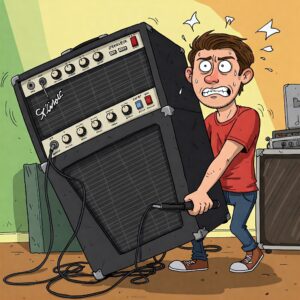
Conclusion: Finding Your Perfect Bass Combo Amp 🎵
The ideal bass combo amp for you depends on your specific needs, playing style, and budget. Consider where you’ll be playing, what genres you focus on, and how much power you truly need. Remember that a moderate-sized quality amp will usually serve you better than an oversized budget option.
Whether you’re drawn to the classic warm tones of an Ampeg, the clean, powerful sound of a Markbass, or the affordable versatility of a Fender Rumble, there’s a perfect bass combo amp waiting for you. Take your time, try out different options if possible, and choose the one that inspires you to play your best.
I hope this guide has helped clarify what to look for in a bass combo amp and narrowed down your options. Your choice of amplification is a deeply personal aspect of your sound – one that can inspire new musical directions and enhance your playing experience.
More FQAs:
❓ What is a bass combo amp used for?
✅ A bass combo amp is an all-in-one unit that combines an amplifier and speaker, designed to amplify bass guitar signals for practice, rehearsal, or live performance…
❓ Is a bass combo amp good for beginners?
✅ Yes, a bass combo amp is ideal for beginners due to its plug-and-play design, built-in features, and portability, making setup simple and efficient…
❓ Can a bass combo amp be used for small gigs?
✅ Many bass combo amps offer enough power for small gigs, especially those with at least 100 watts and a 12
❓ What size bass combo amp is best for home use?
✅ For home use, a bass combo amp with 15–50 watts and an 8
❓ Do bass combo amps have built-in effects?
✅ Some bass combo amps include built-in effects like overdrive, compression, or EQ shaping, giving players more tone options without external pedals…
Recommended for You:
- 10 Best Bass and Amp Combo Options for Beginners and Pros in 2025
- American Bass 15 Subwoofers: 7 Mind-Blowing Options For Ultimate Sound Power
- 4 String Electric Bass Guitar: 10 Best Options for Beginners and Pros in 2025
Disclaimer: This article contains affiliate links. If you purchase products through these links, we may earn a small commission at no additional cost to you.
